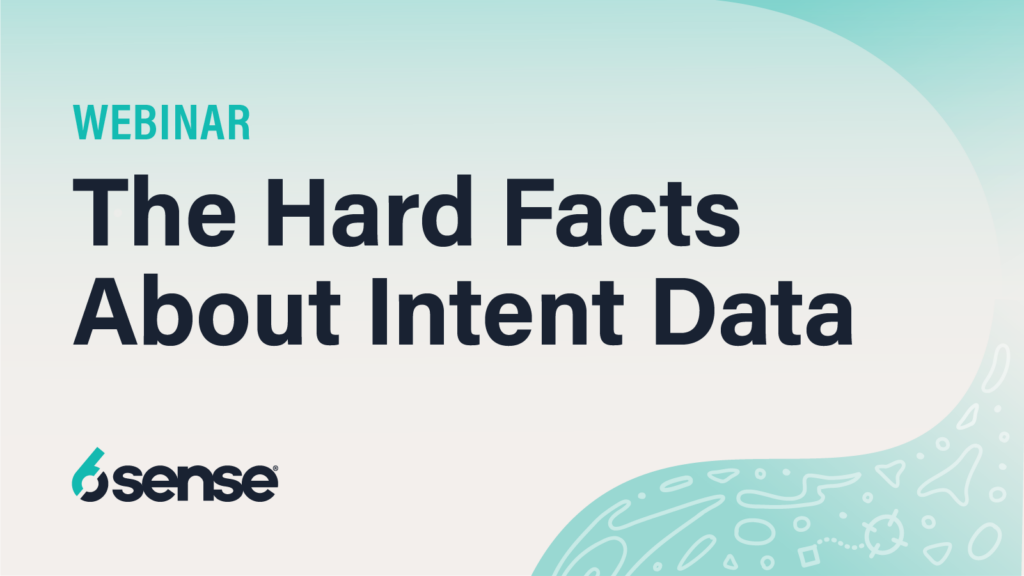Here’s a question that makes many a marketer gulp: How do you know that your ABX program is actually working?
If you’re new to the ABX game, you may not have a satisfactory answer. It’s no secret you want to boost revenue and stay on top of meaningful sales deals … but what are the benchmarks that’ll ensure predictable revenue growth and peace of mind?
If we were talking about your personal health, you’d examine bellwethers such as BMI, blood pressure levels, and the like. ABX has its own key performance indicators and ways to track them, but many revenue teams still launch their ABX programs without fully understanding them.
This is a mistake. Shortchanging the importance of metrics is risky. It creates problems that cascade to all aspects of a revenue team:
- Marketing doesn’t have the guidance necessary to direct outreach tactics and spend
- Sales can’t sufficiently weed out bogus leads, or get a feel for timing
- Customer Success misses upsell opportunities and doesn’t know how an account’s decision-making may or not fit with the norm
- This creates Troublesome and expensive reporting deficiencies arise that can bring revenue teams to a standstill
Accurate and actionable metrics are the keys to resonating with buyers, expanding pipeline, and accelerating sales velocities. Here are 9 Reporting Capabilities that revenue teams “must have” to fully understand — and act upon — their sales intelligence.
This list is organized into three categories:
- Preparedness Markers
- Leading Indicators
- Performance Metrics
Let’s take a closer look.
Preparedness Markers
To deliver standout experiences to well-defined business audiences, a little housekeeping is needed. For starters, prioritize tracking metrics that are more reference points than data points. These prerequisites include:
1: Account Data
According to the 2020 State of Predictable Revenue Growth report, half of sales and marketing leaders don’t agree, or just somewhat agree, on their prioritized account list. One-third of account-driven organizations haven’t even defined such a methodology.
If you haven’t gathered sufficient market research or created organizational alignment around which accounts to target, it’s time to do so … or to enlist B2B technologies (like great account engagement platforms) with predictive modeling to reveal your:
- Total addressable market
- Ideal customer profile (and eventually your in-market ideal customer profile)
2: Defined Personas
High-performance ABM strategies involve personalizing messages and content to choice contacts. You can’t do that at scale without in-depth knowledge of your buyer personas.
Again, invest in advanced market research services or technologies to illuminate your ideal targets’:
- Formal titles
- Regular responsibilities
- Underlying wants, needs, and pain points
- Trust dynamics (i.e. who they trust, and how and why they trust them)
Leading Indicators
Your platform’s reporting capabilities should present early warning or winning signs in the form of digital reach, response, and engagement.
These data points suggest if things are trending in the right direction (or not):
3: Outbound Reach
World-class account engagement platforms get you in front of the accounts that matter most over multiple, coordinated channels (such as advertising, email, and social campaigns). They document the strength of your penetration, too. This reach is essential, but the reporting only tells you if you’re getting seen, not getting sales.
These first flickers include metrics such as:
- Advertising click-through and view-through rates
- Email open, click-through, forwarding, and bounce rates
- Social media audience exposure, impressions, and sharing
4: Outbound Resonance
Clicks and views can somewhat indicate how well your content is resonating in addition to reaching, but their usefulness is limited. And while some cool psychometric and natural-language processing technologies have emerged to detect the mood of text and symbol patterns, most ABX pros today don’t consider them essential.
To sufficiently read your buyers’ sentiment, basic online and offline listening should be performed to expose:
- High-prevalence comments
- High-prevalence social reactions (emojis for Like, Love, Dislike, Sad, etc.)
5: Target Account Engagement
A stronger success indicator is how much website traffic your ABM program is creating. This reveals message reach and receptivity, and also begins to show buyer intent.
With elite ABM technologies, revenue teams can gauge how often priority accounts visit their websites and interact with their content — even when those targets don’t complete forms or otherwise self-identify. Importantly, this intel can extend beyond the account-level (relevant business targets) and to specific personas (pertinent job titles).
These units of measurement are comprised of:
- Target account visitors (total and by persona)
- Target account page views (total and by persona)
- Target account time on site (average time overall and average by persona)
6: De-anonymized Target Account Engagement
The most useful leading indicator, of course, is when you not only know a relevant target (right company, right role) has visited your website, but you know them by name.
These successes are marked by:
- Target account form fills
- Target account registrations
- Target account chatbot inquiries
Performance Metrics
Then there’s your prospect data — the “final mile” metrics that best predict profitability. This vital reporting serves as the crux of your dynamic revenue operating plan, informing financial forecasts, rationalizing headcount, securing outside investment, and more.
The metrics often fall into three categories:
7. Sales Ready Pre-opportunities
The moment an outside party moves from “engaged in research” to “ready for a meeting,” they become a bona fide prospect.
These calendared leads go by many names but common definitions include:
- In-market accounts (intent-qualified)
- BDR-qualified opportunities
- Buying team captures (number of contacts identified and qualified by BDRs)
8. Pipeline Accounts
The next step is for sales or business development professionals to validate account leads and, if all goes well, add them to the sales pipeline.
Here, prospects’ individual needs and goals are identified, proposals are presented, and compliance criteria are addressed. Many leads will be reclassified in advance or in lieu of a deal being officially struck.
These metrics vary by industry, but familiar examples include:
- Marketing pipeline impact (percentage of pipeline opportunities coming from marketing)
- Pipeline opportunities/volume
- Sales-ready opportunity to pipeline opportunity conversion rates
- Pipeline valuation
- Lost deals
9. Converted Leads
This is the holy grail of metrics. The moment a signature is added to a contract, the bell is rung, and the logo is added to the roster is exciting.
It’s hallmarked by metrics such as:
- Pipeline win rate (percentage of conversions from pipeline)
- Marketing win rate (percentage of conversions coming from marketing)
- Average deal sizes
- Average cycle times
Conclusion
No sensible person would embark on a long road trip without any way to gauge fuel level, tire pressure, or engine health. Similarly, it doesn’t make sense to begin an ABX journey without the proper reporting systems and processes to confirm that it’s working and know where to make enhancements. What gets measured gets improved.
Make certain you have these ABX “must-haves” in place, starting with the foundational elements, extending into reach mechanisms and metrics, and culminating in performance metrics that really matter to any organization — deals, dollars, and durations.






